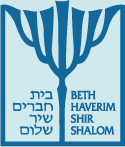Enjoy this mashup of musical themes of the holidays from Six13! https://youtu.be/nj2UmFyrsxk
Rosh Hashanah
Rosh HaShanah (literally, “Head of the Year”) is the Jewish New Year, a time of prayer, self-reflection, and . We review our actions during the past year, and we look for ways to improve ourselves, our communities, and our world in the year to come. The holiday marks the beginning of a 10-day period, known as the Yamim Nora-im (“Days of Awe” or “High Holidays”), ushered in by Rosh HaShanah and culminating with Yom Kippur (the “Day of Atonement”). Rosh HaShanah is widely observed by Jews throughout the world, often with prayer and reflection in a synagogue. There also are several holiday rituals observed at home.
Rosh HaShanah is celebrated on the first day of the Hebrew month of , which – because of differences in the solar and lunar calendar – corresponds to September or October on the Gregorian or secular calendar. Customs associated with the holiday include sounding the , eating a round , and tasting apples and honey to represent a sweet New Year. https://reformjudaism.org/
What’s Happening in the Torah? Rosh HaShanah Activities for Families
Celebrate Rosh HaShanah with Shalom Sesame: Sounding the Shofar
What Do The Sounds of The Shofar Mean?
Watch our director of education, Rebecca McVeigh, read Sammy Spider’s First Rosh Hashanah!
Shana Tovah, A Rosh Hashanah Music Video!
Page of simple mazes to print and solve
Yom Kippur
Yom Kippur means “Day of Atonement” and refers to the annual Jewish observance of fasting, prayer, and repentance. Part of the High Holidays, which also includes Rosh HaShanah (the Jewish New Year), Yom Kippur is considered the holiest day on the Jewish calendar.
Yom Kippur is the moment in Jewish time when we dedicate our mind, body, and soul to reconciliation with our fellow human beings, ourselves, and God. As the New Year begins, we commit to self-reflection and inner change. As both seekers and givers of pardon, we turn first to those whom we have wronged, acknowledging our sins and the pain we have caused them. We are also commanded to forgive, to be willing to let go of any resentment we feel towards those who have committed offenses against us. Only then can we turn to God and ask for forgiveness. As we read in the Yom Kippur liturgy, “And for all these, God of forgiveness, forgive us, pardon us, and grant us atonement.” https://reformjudaism.org/
Learn About Yom Kippur with Shalom Sesame: Saying Sorry
Sukkot is one of the most joyful festivals on the Jewish calendar. “Sukkot,” a Hebrew word meaning “booths” or “huts,” refers to the Jewish festival of giving thanks for the fall harvest. The holiday has also come to commemorate the 40 years of Jewish wandering in the desert after the giving of the atop Mt. Sinai.
Also called Z’man Simchateinu (Season of Our Rejoicing), Sukkot is the only festival associated with an explicit commandment to rejoice. Sukkot is celebrated five days after Yom Kippur on the 15th of the Hebrew month of and is marked by several distinct traditions. One, which takes the commandment to dwell in booths literally, is to erect a sukkah, a small, temporary booth or hut. Sukkot (in this case, the plural of sukkah) are commonly used during the seven-day festival for eating, entertaining and even for sleeping.
Our sukkot have open walls and open doors, and this encourages us to welcome as many people as we can. We invite family, friends, neighbors, and community to rejoice, eat, and share what we have with each other. Another name for Sukkot is Chag HaAsif (Festival of the Ingathering), representing the importance in Jewish life of giving thanks for the bounty of the earth. https://reformjudaism.org/
Celebrate Sukkot with Shalom Sesame: The Mitzvah of Welcoming Guests
Israeli Kids Explain Sukkot
The LEGO Sukkot Movie: Jewish Holidays 101
Sukkah Coloring Page
Livin’ in a Booth – Fountainheads Sukkot
Simchat Torah
Immediately following Sukkot, we observe Sh’mini Atzeret and Simchat Torah, a fun-filled day during which we celebrate the completion of the annual reading of the and affirm Torah as one of the pillars on which we build our lives. As part of the celebration, the Torah scrolls are taken from the ark and carried or danced around the synagogue seven times. During the Torah service, the concluding section of the fifth book of the Torah, D’varim (Deuteronomy), is read, and immediately following, the opening section of Genesis, or B’reishit, is read. This practice represents the cyclical nature of the relationship between the Jewish people and the reading of the Torah.
Historically, Sh’mini Atzeret and Simchat Torah were two separate holidays (a day of reflection after the end of Sukkot and a celebration of Torah the following day). However, in Israel and in Reform congregations, which generally observe one day of holidays rather than two, Sh’mini Atzeret is observed concurrently with Simchat Torah. https://reformjudaism.org/
